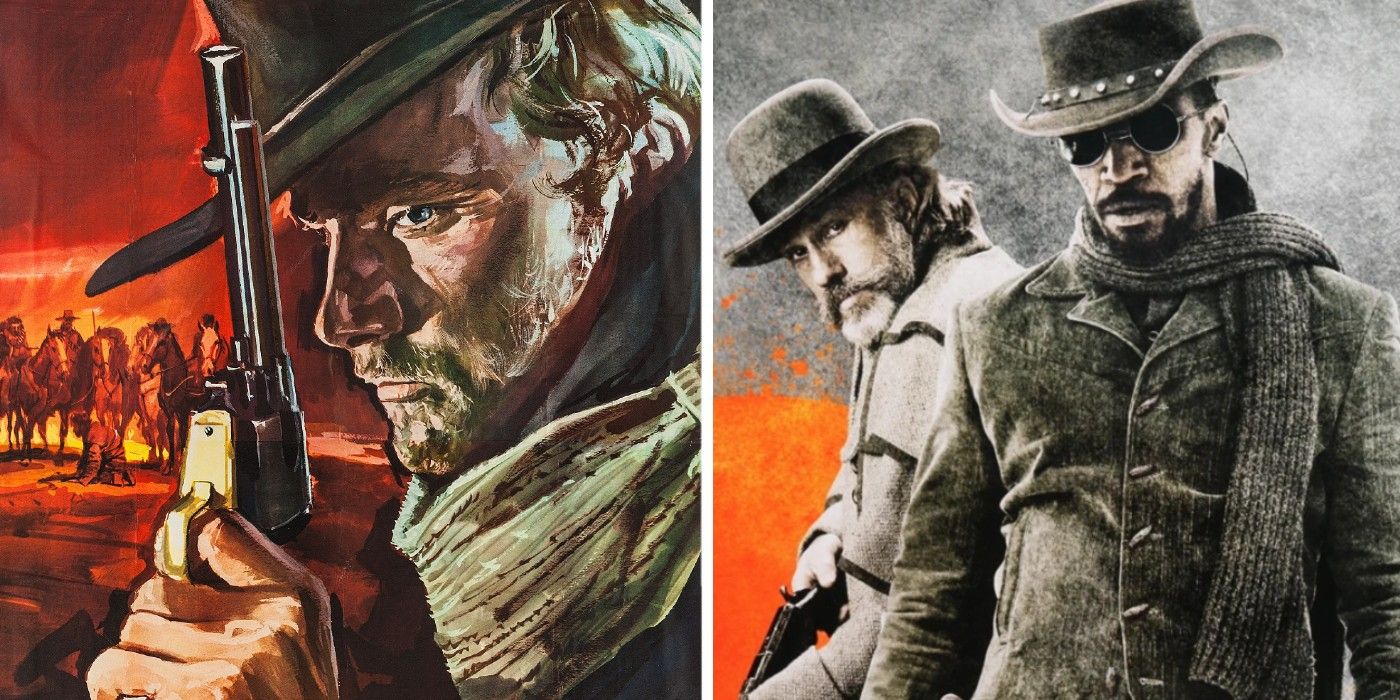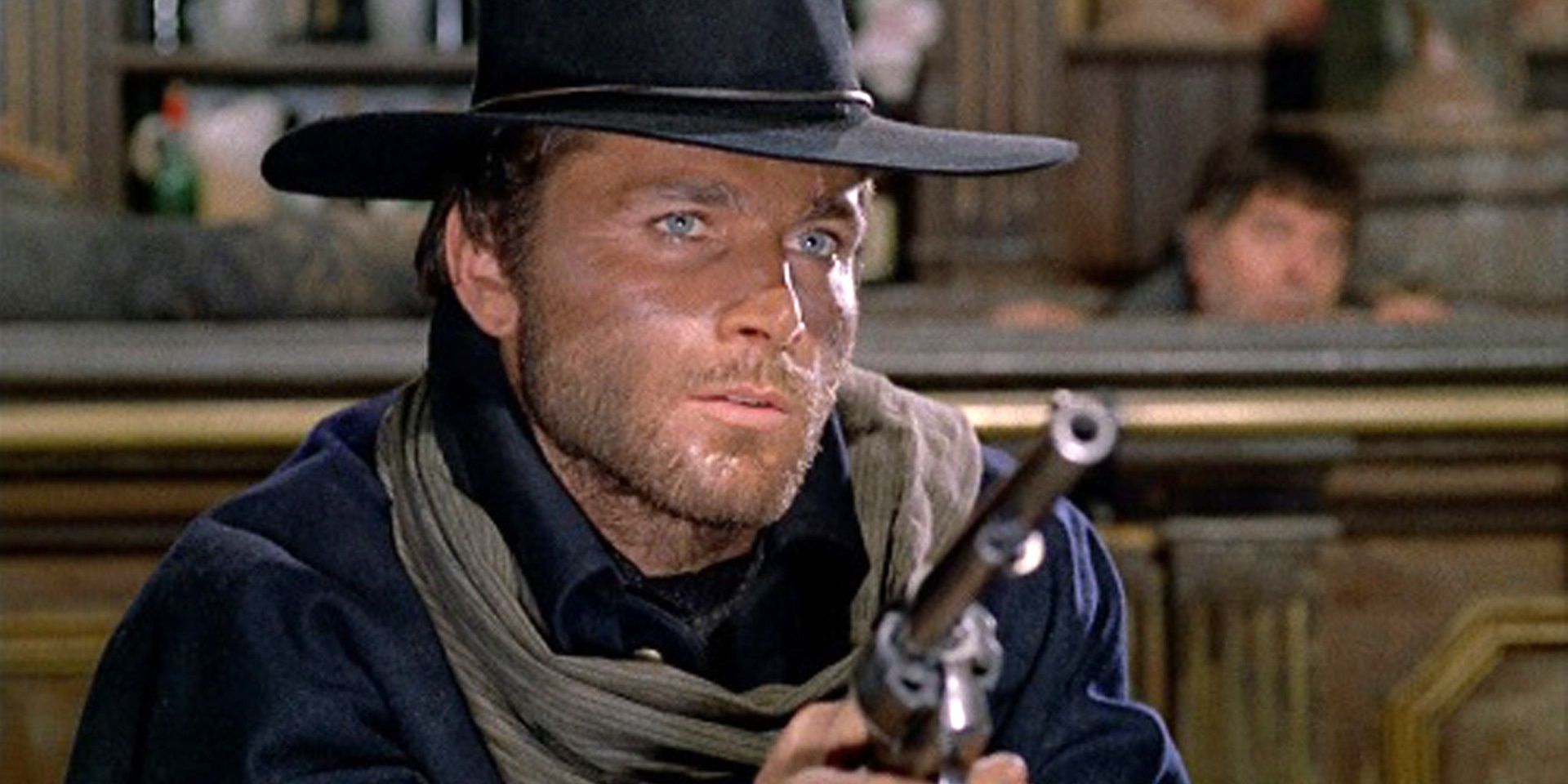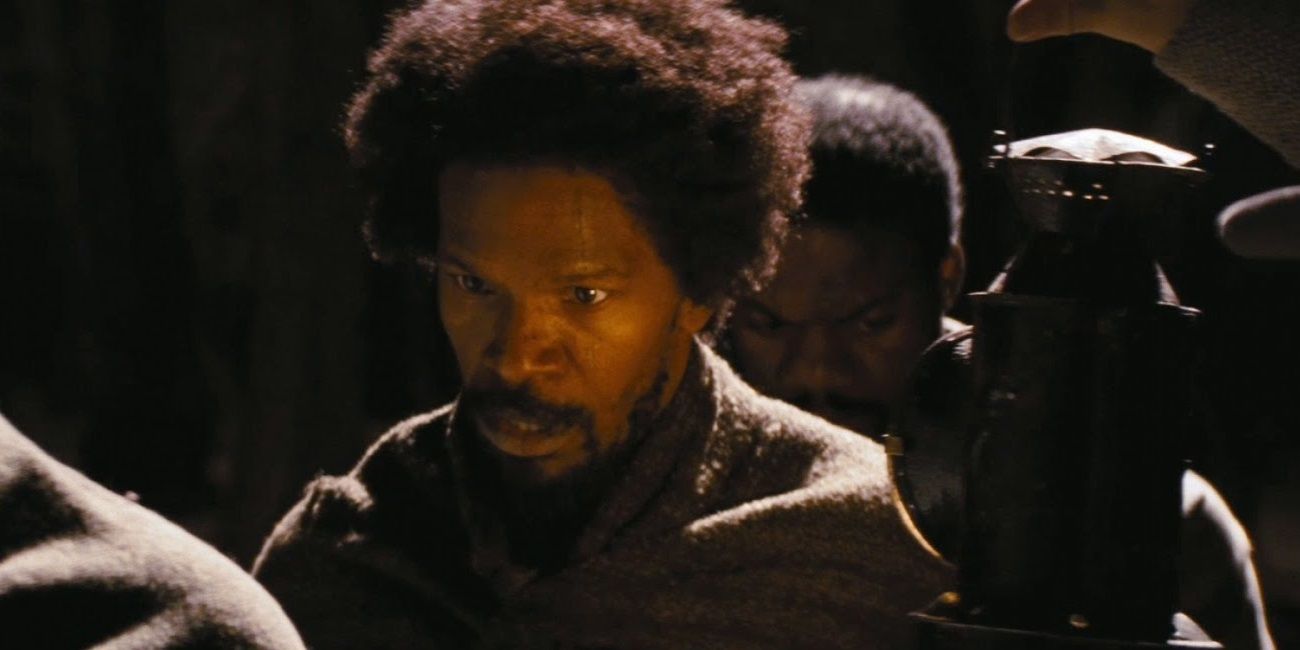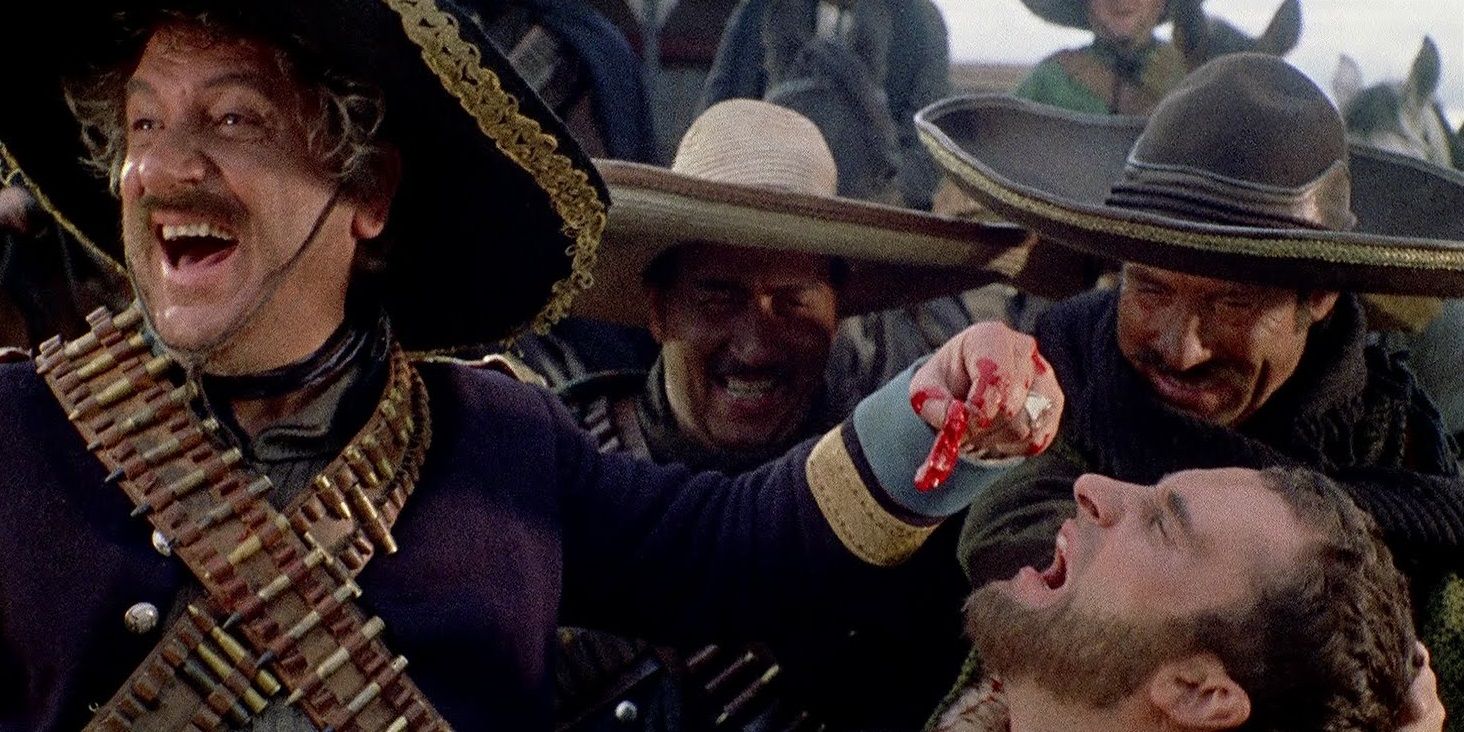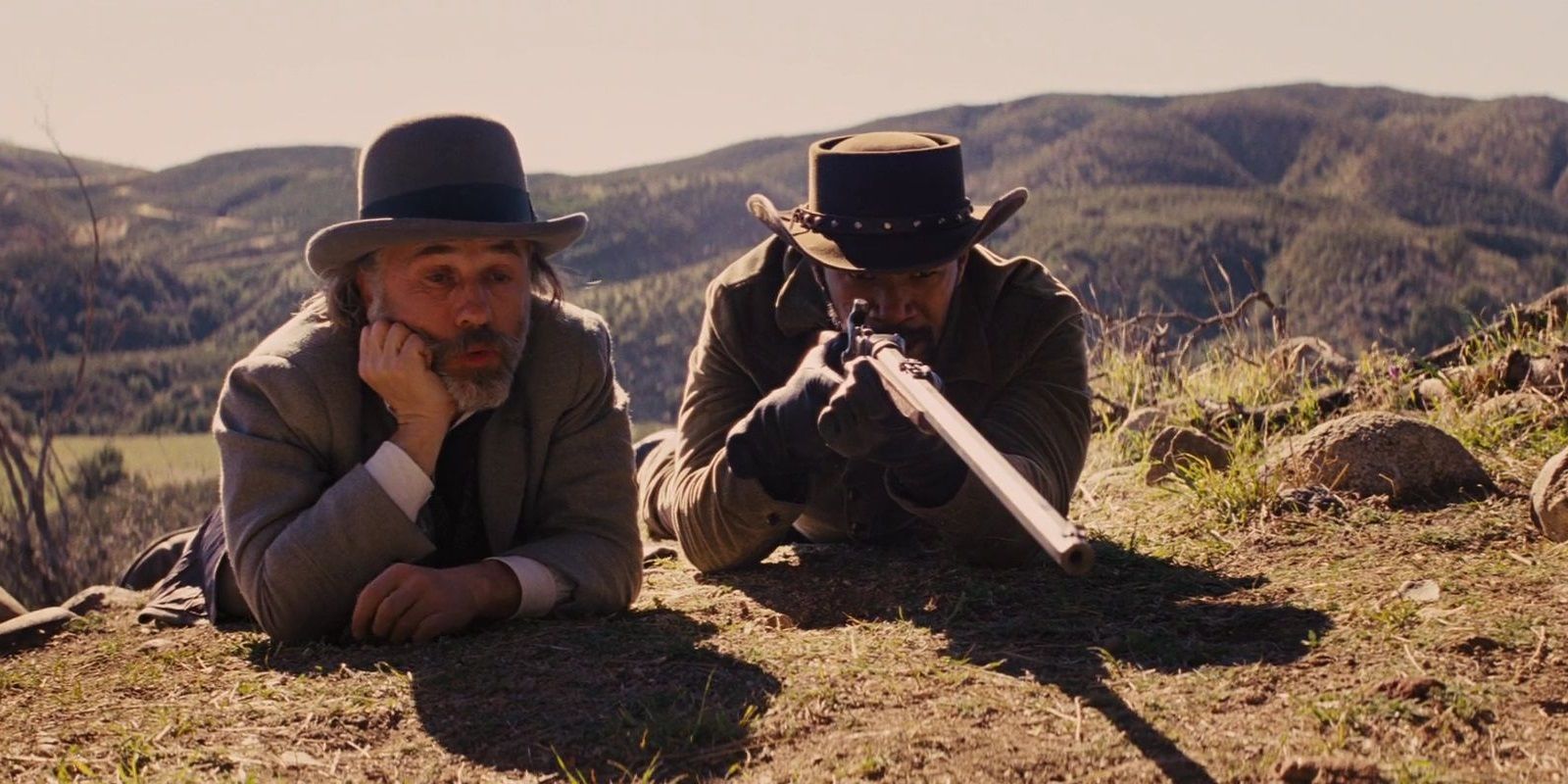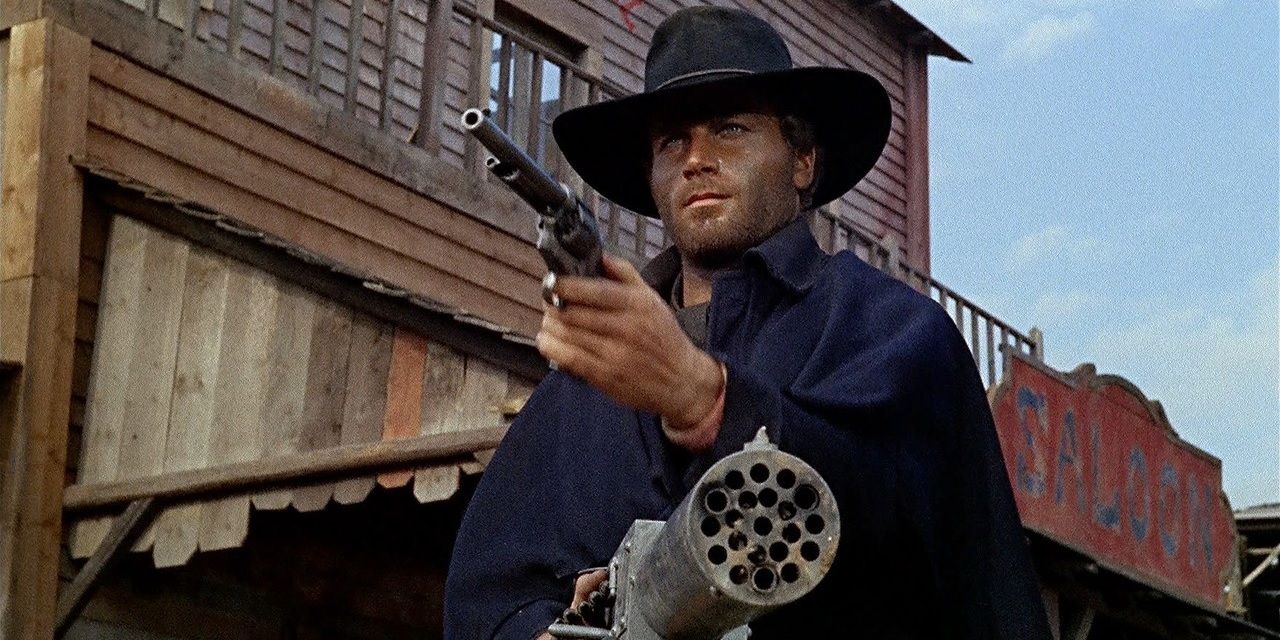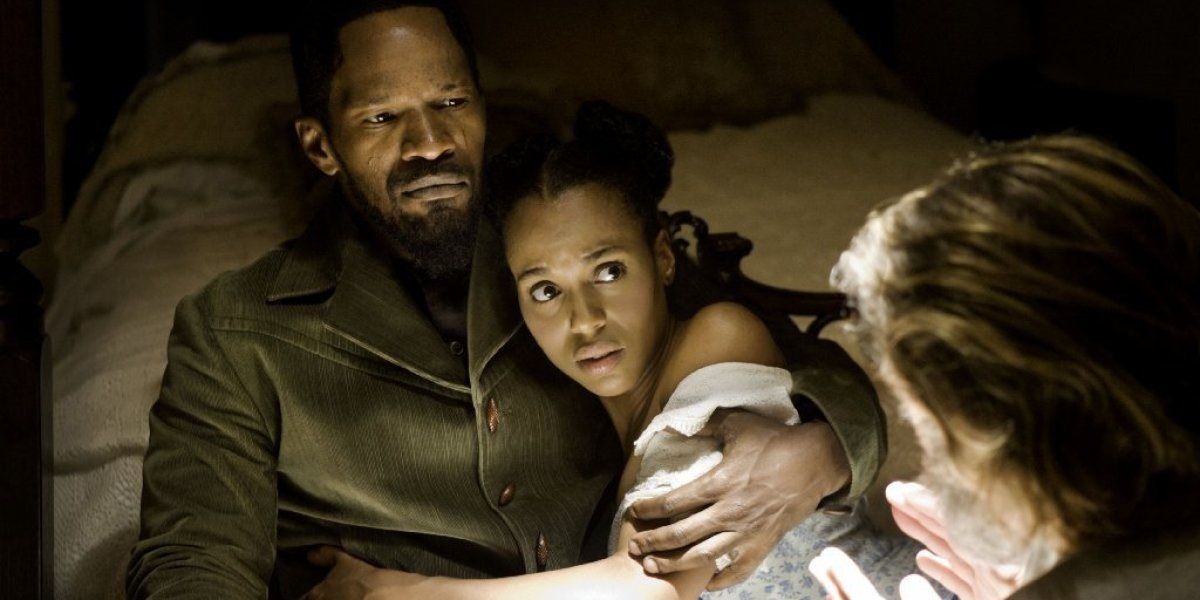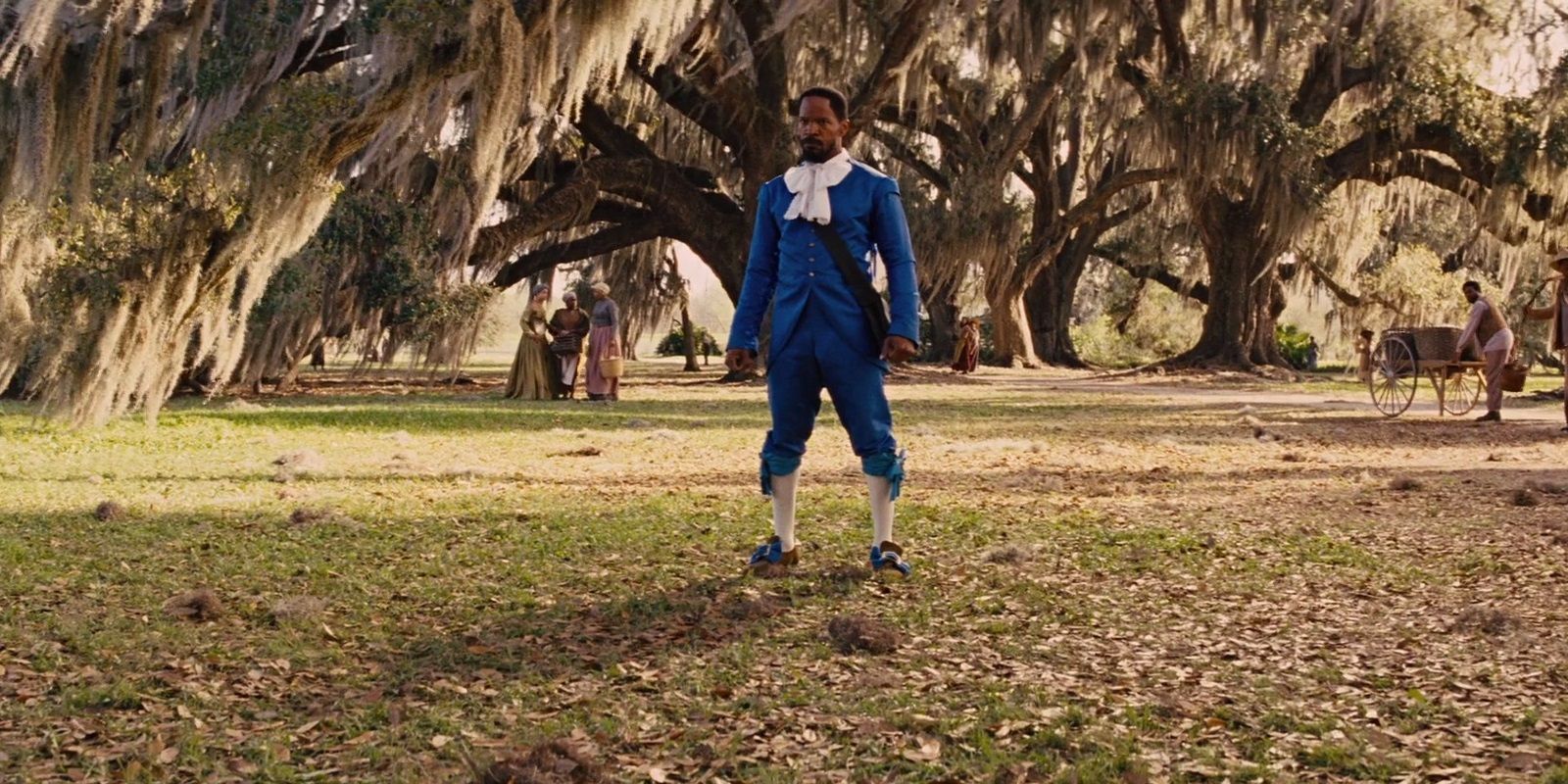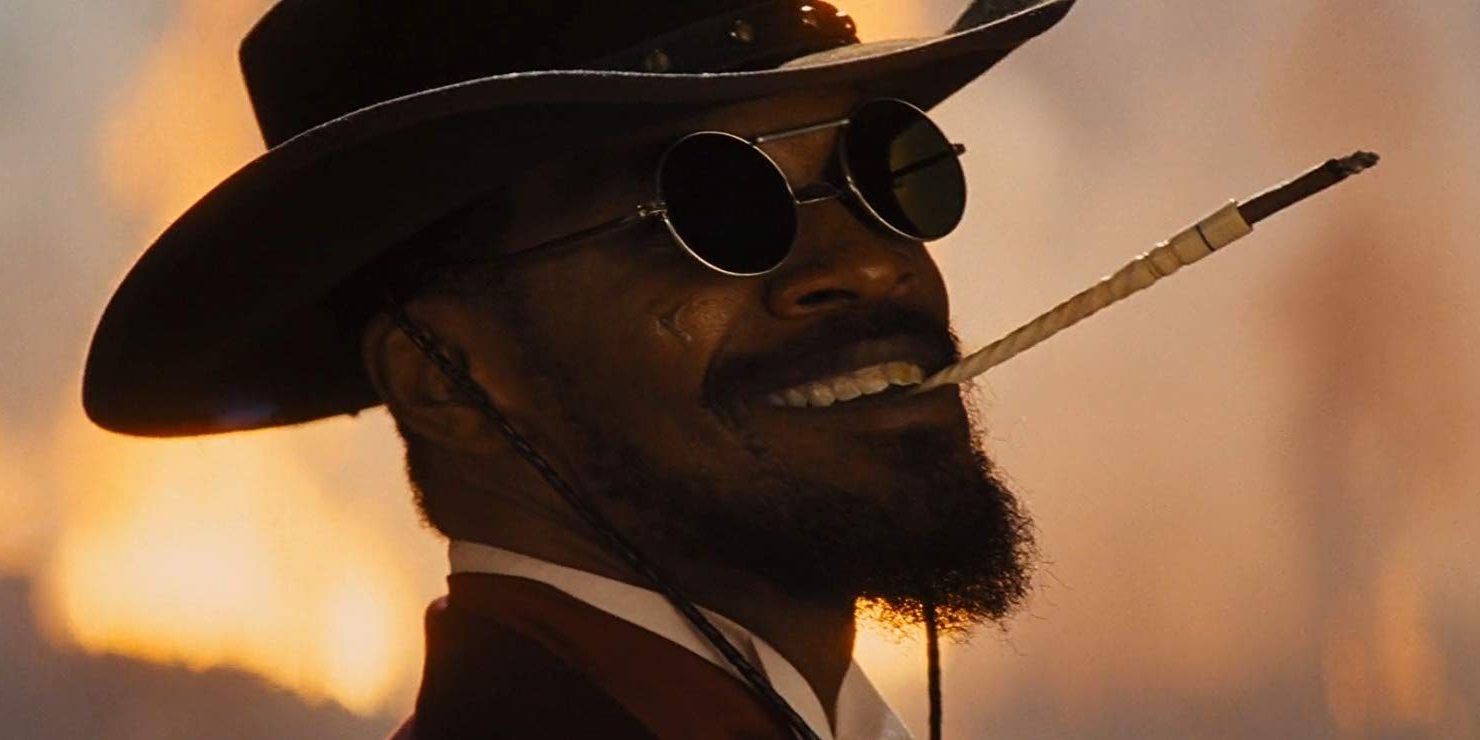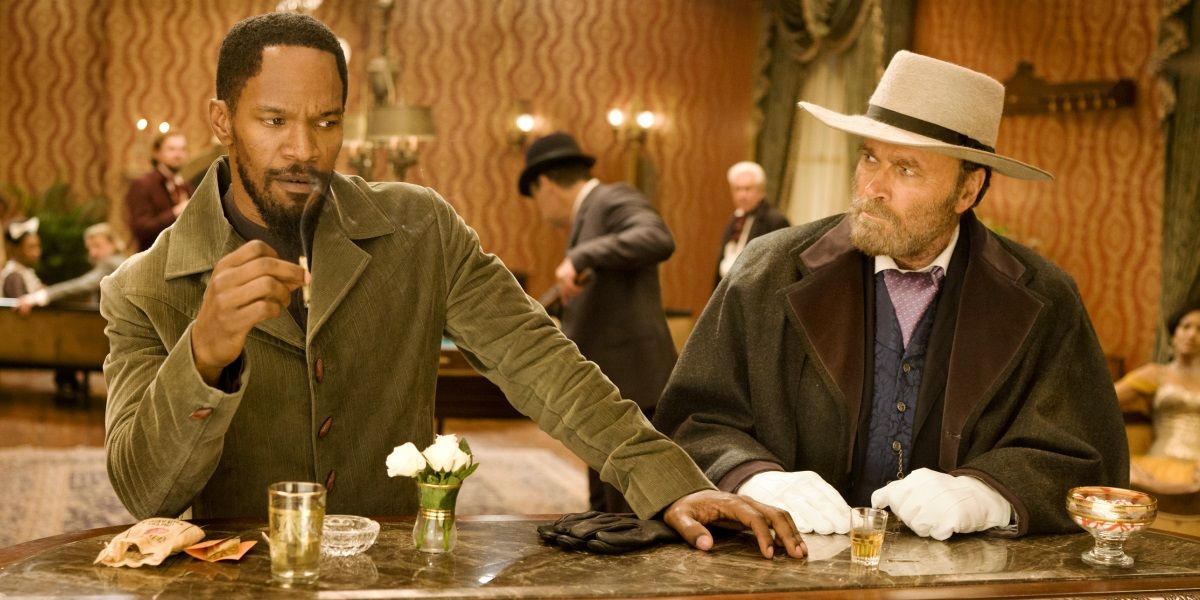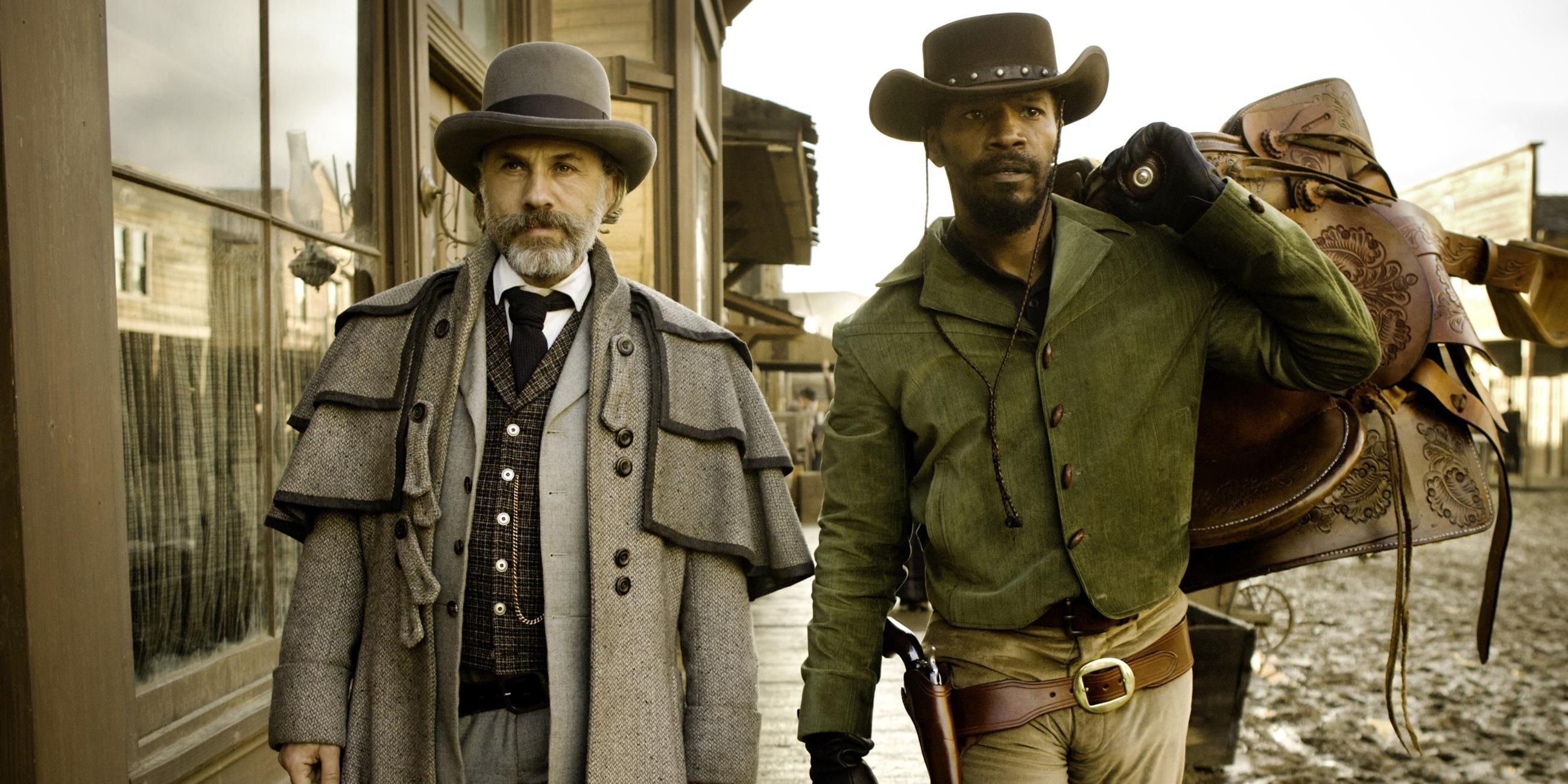Quentin Tarantino was writing a book about Sergio Corbucci’s bleak portrayal of fascism in the Wild West in his ultraviolent Spaghetti Westerns when he came up with the idea to tell a story about American slavery through the lens of a Spaghetti Western. The result was Django Unchained, the tale of a freed slave who uses his newfound skills as a bounty hunter to save his wife.
Like many of Tarantino’s movies, it borrowed heavily from existing movies to tell a completely new story that daringly took an otherwise forgotten genre to unexplored territories. The one it borrowed the most from, unsurprisingly, is Corbucci’s 1966 spaghetti western Django, but there’s plenty of original material that sets it apart.
BORROWED: The Name Django
The most obvious way that Tarantino borrowed from Corbucci’s Django is taking the name Django for his protagonist. Jamie Foxx played Tarantino’s Django, while Franco Nero played Corbucci’s.
Aside from being a sharpshooter and an outright badass, Foxx’s Django is very different from Nero’s. Still, it’s a pretty distinctive name.
DIFFERENCE: The Antebellum Era Setting
While the original Django acknowledges the Civil War as some ex-Confederates threaten Django for having fought for the Union and some of the villains are Red Shirts (paramilitary white supremacists who wreaked havoc during the Reconstruction), it isn’t overtly about slavery. Then again, scraping the surface of the Civil War without exploring its ramifications was par for the course for Westerns of the time.
Django Unchained, on the other hand, deals with America’s darkest historical chapter head-on. Tarantino even declared it to belong to a new genre: "The Southern.”
BORROWED: The Brutal Violence
Although it’s relatively tame by today’s standards, Corbucci’s Django was wildly controversial for its violent content when it hit theaters in 1966. In fact, it was banned in the UK for being too violent, a ban that wasn’t lifted until a more liberal chairman took over the BBFC.
Tarantino continued that tradition in Django Unchained. To be fair, all of the director’s movies have been rife with graphic violence but with all its shootouts full of cartoonish blood spurts, Django Unchained just might be his most violent work.
DIFFERENCE: The Epic Scope
While the original Django is more or less confined to a single town, taking cues from Sergio Leone’s A Fistful of Dollars (which in turn took cues from Akira Kurosawa’s Yojimbo), Django Unchained is a large-scale epic that takes viewers all over the antebellum south.
The long section in the middle that takes place across snowy plains was inspired by a snowy section in a different Corbucci western, The Great Silence. This larger scale would also inform Tarantino's next Western, The Hateful Eight.
BORROWED: The Bounty Hunter Profession
Both Djangos – the one created by Corbucci and the one created by Tarantino – are bounty hunters. The larger scale and longer timeline of Django Unchained means that we get to see Jamie Foxx’s Django collect more bounties, but Django’s reputation as a feared bounty hunter in the 1966 original is made very clear.
They’re both formidably quick on the draw and have perfect aim, allowing them to take out multiple assailants at once when they’re outnumbered and faced with seemingly insurmountable odds. Sadly, the new Django doesn't carry a cool machine gun like his predecessor did.
DIFFERENCE: Django's Love Interest
In 1966’s Django, the title character mourns the loss of Mercedes Zaro, the love of his life who was killed by Major Jackson, and seeks vengeance against Jackson for her death. Django finds a new love interest in the prostitute María, but he’s apprehensive about getting together with her because his heart still belongs to Zaro.
In Django Unchained, Django’s love interest is his wife, Broomhilda, who’s alive but technically belongs to Calvin Candie as a slave. The movie takes a sort of fairy tale structure as Django and Dr. Schultz infiltrate Candie’s plantation to rescue Broomhilda from an evil opulent residence.
BORROWED: Some Of Luis Bacalov’s Score
As with most of Tarantino’s movies, the soundtrack of Django Unchained is drawn from the scores of a bunch of existing movies. One that he heavily drew from is Luis Bacalov’s gorgeous, operatic score from the original Django.
This includes the theme song, which Bacalov composed with Rocky Roberts, and the triumphant “La Corsa (2nd Version).” Plus, RZA’s end credits song, “Ode to Django (The D is Silent),” samples some of the dialogue from the English dub of Django.
DIFFERENCE: The Anachronistic Music
While Luis Bacalov’s score for the original Django was a pretty traditional western score – and one of the best from the Spaghetti Western subcategory – with a distinctly period-specific sound, Quentin Tarantino filled Django Unchained’s soundtrack with anachronistic music.
For example, “Unchained” is a mashup of James Brown’s “The Payback” and Tupac Shakur’s “Untouchable,” while the original track that Rick Ross recorded for the movie, “100 Black Coffins,” has a modern hip-hop sound.
BORROWED: Franco Nero
Tarantino tapped Franco Nero, who played Django in Corbucci’s original movie, to make a cameo appearance in Django Unchained. He plays Amerigo Vessepi, the owner of the slave fighting Calvin Candie’s slave in the Mandingo scene.
Foxx’s Django joins him at the bar, where Vessepi asks him to spell his name. Django says, “D-J-A-N-G-O. The D is silent.” In a wink to the audience, Vessepi slyly replies, “I know.”
DIFFERENCE: Django Is The Sidekick
Nero’s Django in the Corbucci original was a lone wolf, wandering through the Wild West, dragging a coffin and collecting bounties. Meanwhile, Foxx’s Django in Tarantino’s homage has a sidekick in the form of Dr. King Schultz, the dentist-turned-bounty hunter who trains him up.
Django does emerge as his own hero when the film ends, but some felt that this was a bit too late for their liking. In fact, Will Smith turned down the role of Django because he felt that Dr. Schultz was the true main character and he’d be playing second fiddle to Christoph Waltz.

